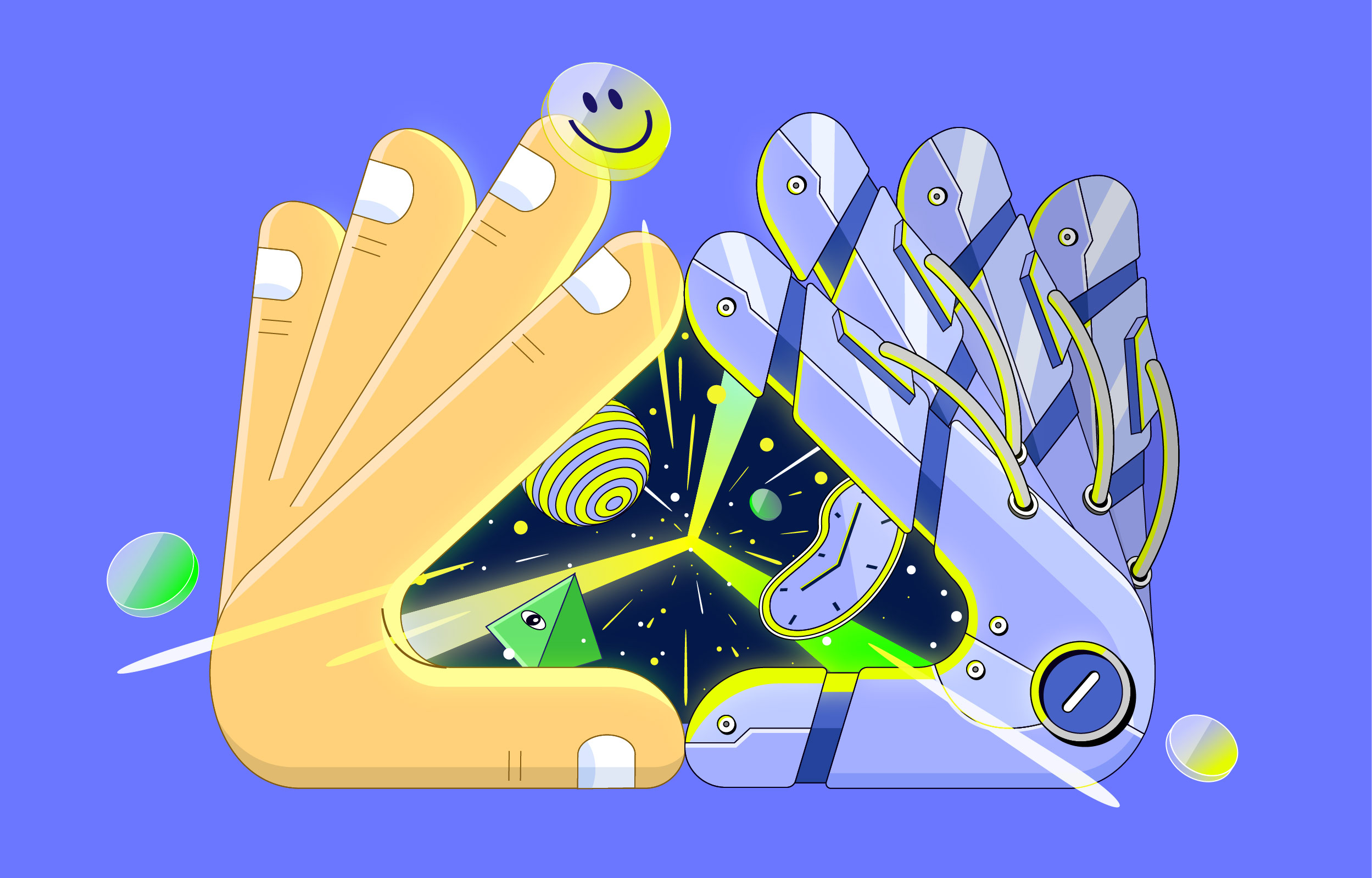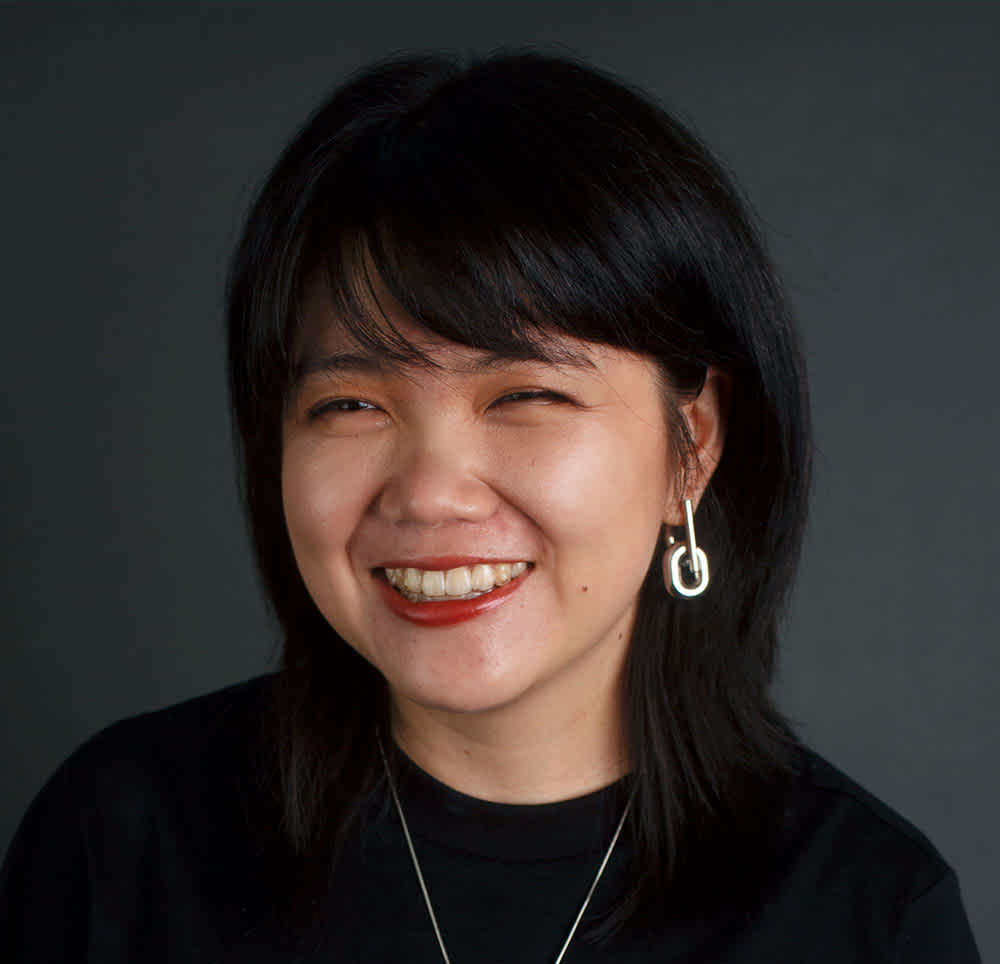
The creative journey thrives on collaboration between diverse minds and perspectives. So why not boost this collaboration by welcoming AI as a new partner?
Despite common fears that AI might dilute human ingenuity, inviting AI into the journey is a way to alleviate some of the pain points in traditional collaboration, complementing – not replacing – the work of creatives.
Let’s look at some of the ways AI can help us reach that "aha!" moment more seamlessly.
AI helps gain momentum at the offset of the journey
AI can lend a helping hand from the first step, exploration. Starting from scratch is always daunting, and there’s also the fear of failure. With AI, we can simply jot down our immediate thoughts and ask it to “yes and…”, just like we do with other people during a collaborative brainstorming – but without pressure, self-consciousness, or fear that others may not appreciate our ideas or consider them inadequate. There are no expectations or interruptions from AI; it won’t break continuity or pass judgement, just helping our ideas flow more freely. We can treat it as the worst try, knowing that everything that comes after will be an improvement on these initial ideas. And when we collaborate with AI, we can work anytime and anywhere at any speed, and start over as many times as we want.
Some people might think that leveraging AI negates the originality of the eventual creative output. But creativity isn’t monopolised by a single person or entity – creatives are always influenced by earlier work or feedback from others. As noted in Frank Chimero’s The Shape of Design: “We accept the light contained in the work of others without darkening their efforts. One candle can light another, and the light may spread without its source being diminished.” Like a human collaborator, AI can illuminate your creative path without dimming the light of your creativity.
What really makes a work our own is defining, the process of drawing a boundary around the whirlwind of ideas swirling within us. These boundaries are the choices we make, guided by project requirements and personal experiences, which provide us with a clear image of our goals and set the underlying rhythm for the dance of our thoughts. The process of defining authenticates our ideas and infuses them with our unique perspective and creativity. The same rule applies to AI: it can serve as the spark that sets your creative process in motion, but it doesn’t determine what we create in the end.
AI can fill the void as we move through the journey
As we continue the creative journey with execution, when we identify, build out, and further develop compelling ideas, there often comes a point where new ideas run dry and the ideas that we found exciting start to feel mundane and repetitive. Every creative person knows that moment when you and your team members stare at a whiteboard in what feels like endless silence, exhausted and yearning for the elusive "aha!" moment.
We can slow down the journey for a moment and present the ideas to AI, just like briefing a new team member. As we articulate the context, we get to step back and see things with fresh eyes, allowing us to discern patterns, deduce structure, and reopen the space for ideas to spawn again. AI also helps us think outside of the box, since it processes information in an “unhuman” way that’s unburdened by the personal schemas, groupthink, or shared experiences that influence our ideas.
AI has often been treated as a “quick solve” (for example, if you want a paragraph, you open chatGPT and simply type something like “generate a paragraph about x subject”), but a result from a vague and short brief will always lack something. It's crucial to onboard AI in the same way as you would brief another person to assist on a creative task: give it clear guidance and expectations, like you are art directing it. The more detail you give it – the more proficient you are as an AI “director” – the better results you will get.
How an ustwobie collaborated with ChatGPT
Recently, ChatGPT served as a collaborator and sounding board for our NYC Delivery Principal Paige Garson when she didn’t have the usual assistance of the creative team. She regularly uses the bot for help with more rote and junior-level tasks, but this particular project was a new independent experience. Garson fed ChatGPT detailed information, such as requirements, opportunities, and risks. *
Ultimately, we remain the composer in an age of AI Collaboration
When we introduce AI as a creative collaborator, our human efforts determine our forward motion, while the AI helps us along, making it easier to get us where we want to go. It's essential to remember not to hand over every duty to AI – and that AI doesn’t replace human ingenuity. Engaging actively is essential throughout the process. After all, we are the conductor and the primary composer. Let AI enhance the creative journey, bridging gaps and lifting the notes, adding harmonious undertones to your melody.
In the process of writing this article, I observed moments when the AI seemed eager to emphasise its capabilities, like novelists who say their characters write themselves. I steered the narrative, ensuring it aligns with my voice. Likewise, AI is a partner in creation, not a co-author. It’s crucial for us to understand that while AI can be immensely helpful, it’s still the human touch that crafts the message and sentiment behind any creative work – and the power to determine the outcome.
* No client data was used or shared as a part of this experiment.
Find out more about our perspectives on human-first AI.
